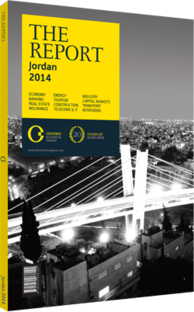OBG talks to Ziad Fariz, Governor, Central Bank of Jordan (CBJ)

Interivew: Ziad Fariz
With inflationary pressures stabilising, and further cuts in key interest rates in January 2014, what are your GDP forecasts for 2014?
ZIAD FARIZ: GDP growth is expected to be around 3.5% in 2014. Inflationary pressures are stabilising, which is a positive sign, and we anticipate budget deficits to fall within the target of our economic outlook.
We are on course to achieve all of our budget targets in 2014. We expect our current account deficit to decrease to less than 10% of GDP in 2014. Outstanding public debt is predicted to reach 86.1% of GDP at the end of 2014 and then decline gradually over the medium term to a level lower than that reached at the end of 2013 (79% of GDP). With increasing deposits in banks and the central bank, our reserve levels have improved, which means that we do not foresee any new pressures on banking sector liquidity.
These factors, among others, have allowed us to reduce key policy interest rates by a total of 75 basis points, aimed at reducing the cost of credit to all sectors, supporting lending to the private sector, and stimulating economic activity. In turn, we hope to see an increase in aggregate demand and employment levels.
How much do external factors in the energy sector affect monetary policy?
FARIZ: Jordan’s primary concern is energy. It is no secret that we have struggled to find an energy vision. Indeed, it was not until very recently, when disruptions to natural gas flows from Egypt caused supply shocks, that the government took action. The ongoing sabotage of the pipeline in the Sinai Peninsula increased our reliance on petroleum products as a substitute for electricity generation. This resulted in a significant increase in our energy import bill during a time when crude oil prices were high, in turn imposing high pressure on our foreign currency reserves. The basic fundamentals of our economy will always remain challenged until we are able to define a long-term energy vision. The central bank responded to these shocks through the introduction of a new monetary policy framework and a bundle of new instruments. The CBJ stands ready to enact and implement certain policies to correct the economy; however, these efforts can only have a limited effect while we are still dependent on imported energy.
With regard to renewable energies, the effect they will have on the economy will be negligible in the short to medium term, but should reveal more positive results in the long run. Jordan remains committed to an energy roadmap, as was recently laid out by the Ministry of Energy, and with that in place, we should see our current account deficit stabilise.
What reforms can be implemented to harmonise the needs of small and medium-sized enterprises (SMEs) with the lending criteria of banks?
FARIZ: In developed countries SMEs are the largest source of job creation. However, in developing countries, a lack of certain formalities and poor access to financing act as major obstacles to these firms’ growth. We must ask ourselves how to develop the financial system so that more credit facilities are available to SMEs.
The CBJ took serious steps to improve this situation by launching the National Payment Council, which focuses on improving retail payments, and by working to obtain low-cost financing for SMEs from international and regional agencies such as the World Bank. Efforts have also been made to establish a credit bureau (set to be licensed in 2014) and to develop a legislative framework to regulate and supervise the microfinance sector. We are also working to design a financial education programme in cooperation with a range of stakeholders, especially the Ministry of Education.
We must reform our credit policies so that SMEs have a fair chance to thrive, but we must also make sure that they align themselves with the prudent guidelines that are set by the banks. In 2013, SMEs were able to access approximately 8% to 10% of all credit facilities in Jordan; however, there have been preliminary discussions to boost this figure to 16% in the medium term.
You have reached the limit of premium articles you can view for free.
Choose from the options below to purchase print or digital editions of our Reports. You can also purchase a website subscription giving you unlimited access to all of our Reports online for 12 months.
If you have already purchased this Report or have a website subscription, please login to continue.

